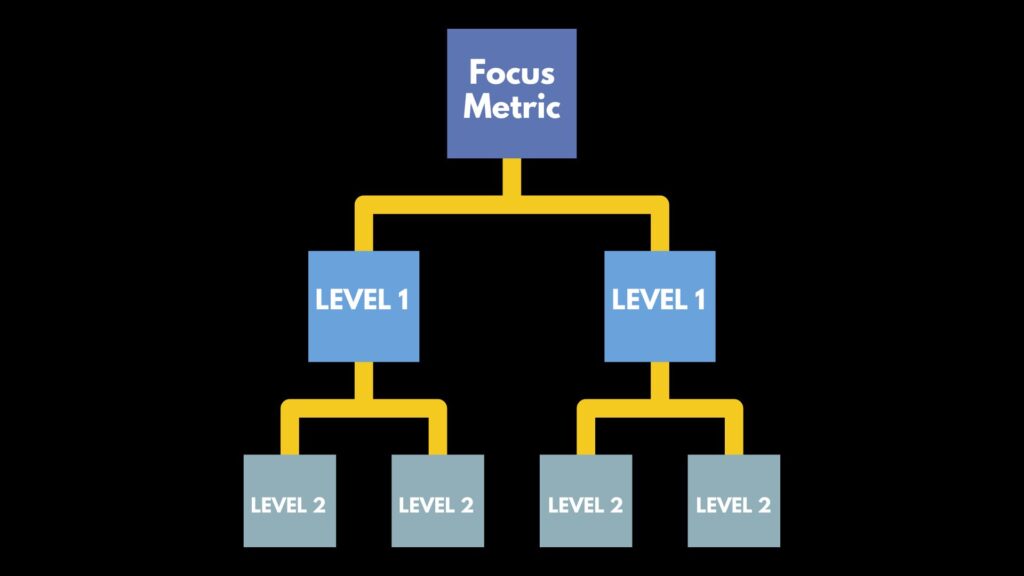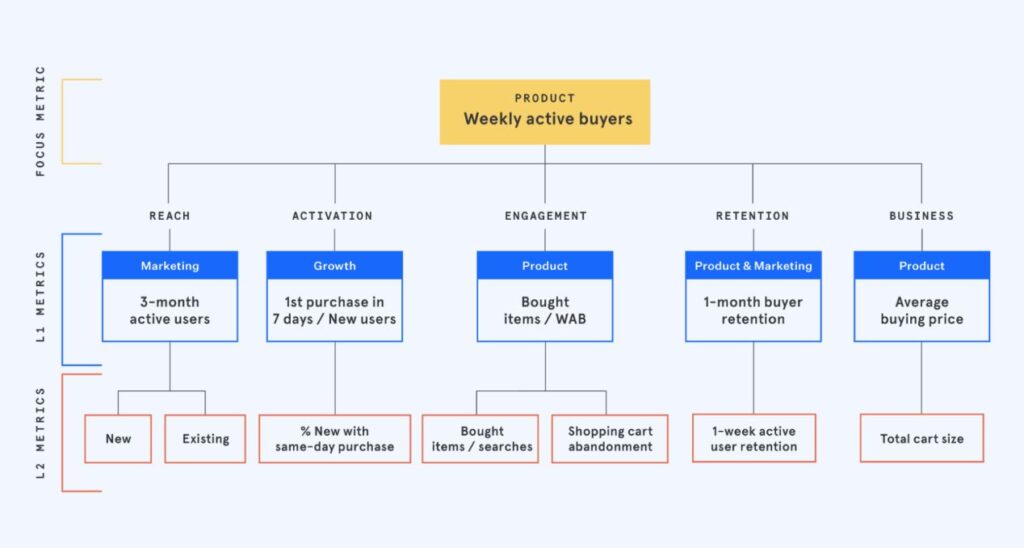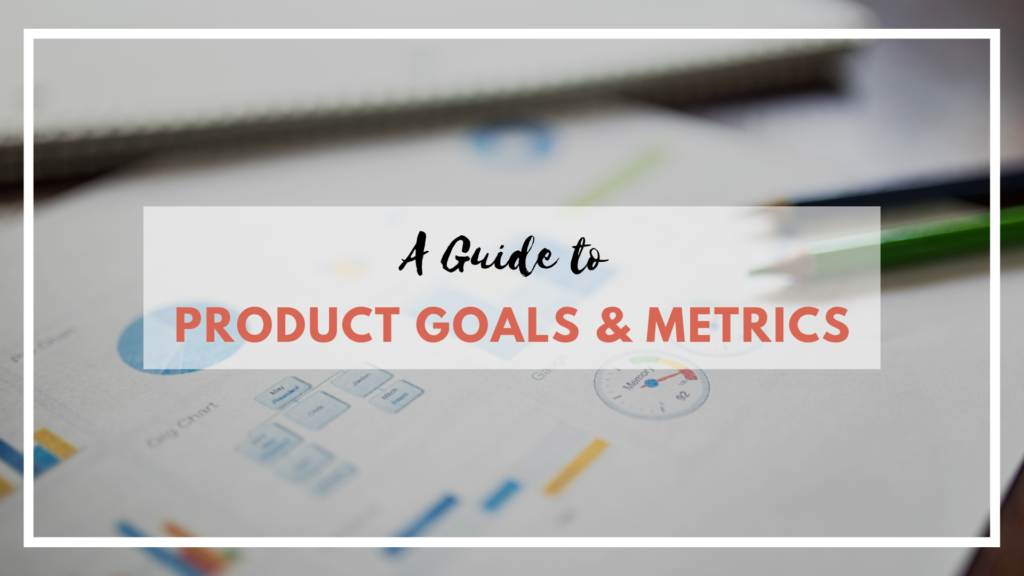Hello, In this blog I intend to write about my understanding of Products Metrics and Goals. I write this from learnings during my work experience and the courses that I have pursued. I also share the three popular frameworks known as AARRR, HEART & GAME.
If You Have an Enemy, Give Him Information
The above quote is precise in this of age information overload and as marketers the learning that I am about to share through this blog has definitely helped me get better insights and measure what matters.
Metrics Introduction:
Metric are data that demonstrate how your Intended user action Impacts your business. For Instance If your metric is CAC It simply shows how much are you investing to acquire that one customer.
But the real question is why are metric so important?
Without proper understanding of the metrics for your business or product your situation somewhat be like…

However, with the proper understanding of metrics you are able to understand your user behavior better, and this also helps you in deciding the next course of action for your business.
With an understanding of metrics in this world overloaded with jargons and data it feels like….

Usually these metrics can be measured through various tools but the most widely used and which I have practiced on is Google Analytics. Other commonly used tools are Mixpanel, Clevertap and Amplitude.
Product Goal – Importance Of Goals
Before we define the right metrics for our product there comes defining the right goal for our product, company or business.
A Product Goal is the final result that the company is looking to ACHIEVE.
The most common example that comes in my mind is when TATA Nano’s goal was to make car affordable to every house in India.
Other common goals vary from company to company depending on what are they trying to achieve.
A company could have goal related to revenue, customer satisfaction, retention and many more.
The Product Goal will determine the exact Product Metrics that will important for the organization.
Levels Of Metrics
When I work as a performance marketing expert many a times my task included to find the reason or recommendations behind a particular drop in performance. Working in a digital space provided me with a huge amount and I used to always feel as if I was stuck in a maze.
Even though I used to have an approach but in between I used to get puzzled among the different metrics and get completely confused.
Then I found the concept of the level of metrics and since then I have been a better understanding of the tasks and also been able to provide better insights and recommendations.

My Approach: Below are the steps that I started to use after the understanding of the hierarchy of the metrics.
- Focus Metric: Also called North Star Metric. This is the top Priority metric. And thus has a direct impact on the goal of the organization. Thus improvement in focus metric leads to direct improvement of the product goal.
- Once you have determined the Focus Metric comes the Level 1 Metrics. These metric complement the focus metric. In digital media space majority of the time the level metrics included these important ratios like CPM, CTR, CPC, CVR, CPA. These Level 1 metrics are a more deep dive in direction the focus metric is pointing to.
- Level 2 Metrics these include a more detailed breakdown of Level 1 Metrics. The Level 1 Metrics could either be broken down on the basis of their individual metric or on different segments like location, device type, platform etc.
Once you create or setup this simple Levels of Metric you tend to easily diagnose and detect the drop off points or areas of opportunities.
Here’s an example of Ecommerce in which The goal of the organization is to increase the No. Of Weekly Active Buyers. I found this insightful and similar could be build for your Product Metric too.

Types Of Product Metric Frameworks
Every Product, company or situation is different, hence a framework might not fully fit in but it will us in structure our thought process.
Most Common Used Metric Frameworks:
- AARRR – Pirate Metric
- HEART – Google’s Invented
- GAME – Impact Map
AARRR – Pirate Metric Framework
This framework is mostly used when the product is about to be launched. This allows us to identify each and every stage and evaluate it.
The AARRR Consist of:
- Acquisition: How are customer finding your product? How many are using it?
- Activation: How many customer are signing up and using the product?
- Retention: How many customers are still using it regularly?
- Referral: Do your customer tell others about the product?
- Revenue: Is product making money? How is it monetized?
HEART – Google Invented
As the title suggested this framework was invented by google and is widely used in terms of engagement.
HEART:
- Happiness: We determine the customers level of happiness and satisfaction from our product. Key metric that can be used are NPS, CSAT, CES.
- Engagement: This aims to measure how long and how frequent are the users using the the app and product. Key metrics could be time spent, completion rate.
- Adoption: This allows us to understand how quickly are user starting to use your product. Is it getting them Hooked?
- Retention: Goal is to make sure user continues to use your product for a longer period of time. Retention Rate, Customer Churn Rate, Repeated Purchases are few metrics that can be used.
- Task: How long does it take for user to complete task with any break or bad experience. This could end on a more technical side were bugs, crashes, bounce rate are few metric frequently measures
GAME Framework:
It is the most hot topic and this framework helps you in defining your own custom metrics.
GAME:
- Goals: what is the advantage from user activity or what is product or features commercial objective. It determines what objective we want. Eg Onboarding new customers, Increase Engagement etc. Identify the business and user goal first
- Actions: This tends to break down all the steps that user takes in their journey. The goal is to prioritize important actions and avoid intangible metrics
- Metrics: Identify our north star metric and then try to fit in metric on every part of journey broken down in step 2.
- Evaluate: This step is like an audit that helps you to determine the strength and weakness of your approach.
Learning about these frameworks helps and individual have a systemized thought process. This helped me to have a better bird’s eye view and come up with my own version.
Also while Studying these frameworks I noticed a common pattern which I had learned fron Nir Eyal book-Hooked. It focused on the MAT principle that helped us in making habit-forming products.
The MAT Principle included Motivation, Ability and Trigger.
- Motivation: What motivated customer to use you product
- Ability: Is your product easy to use?
- Trigger: What triggers them to use and return back to your product?
On learning about product metrics this made more sense.
So that’s all I could summarize about my learning on product metrics and growth. Today with the new age startup where product is the key. Understanding their metric could give us an edge as marketers.
I hope this blog provided you with some useful insights. Let me know your thoughts in the comments and so share it with someone who might find this helpful.
Thanks for Reading!!
